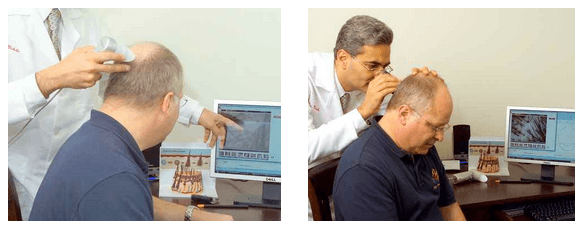Hair Loss Evaluation
A complete hair loss evaluation from a highly trained hair transplant surgeon is the first step to finding an effective solution. Dr. Parsa Mohebi conducts a thorough microscopic evaluation that assesses the individual’s degree of miniaturization. This evaluation will determine the best course of treatment for any hair loss patient.
An initial consultation helps determine whether a patient is a candidate for a hair transplant procedure. Some of the most important factors that can be determined by an evaluation are the number of grafts recommended to achieve desired density, specific pattern of hair loss, and if the patient is suffering from some of the rare medical conditions associated with hair loss such as Alopecia Cicatricial.
Measuring the scalp laxity is also an important consideration when assigning the patients who are considering hair transplantation, as certain procedures such as strip hair transplantation may require more elasticity of the scalp. Adequate laxity is needed so the surgeon can remove the recommended number of grafts in one session.
During a consultation, a patient will be asked about their family history of baldness, as it is one of the most important determinants of future hair loss in patients with patterned hair loss. This information, along with any known medical condition, will help determine what progression of hair loss the patient can expect. These steps can also help determine the best course of treatment for female patterned baldness.
Taking a good medical history is important since some medical conditions can cause hair loss such as iron deficiency, thyroid disorders, and autoimmune diseases such as lupus. Hormonal imbalances can also affect hair loss in both men and women. Certain medications can also have hair loss side effects.
The Miniaturization Study
A microscopic evaluation, also known as a miniaturization study, is used to diagnose the quality of hair, and progression of hair loss. Patients’ miniaturization levels are recorded and will be compared with new levels in the future to predict the progress of hair loss or hair gain during the hair loss evaluation.
